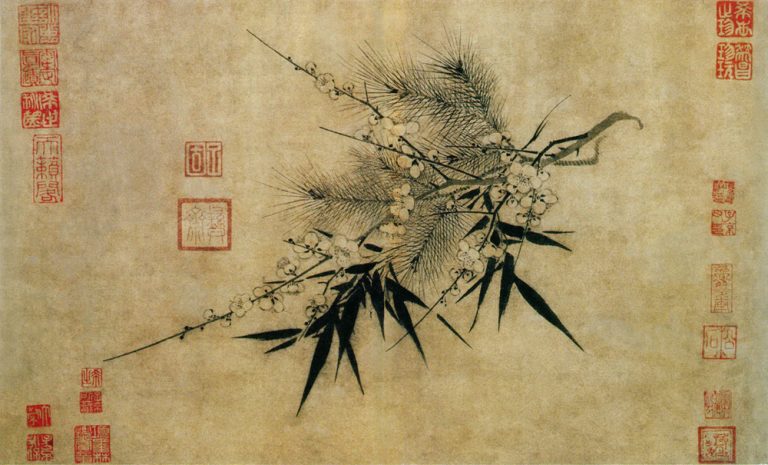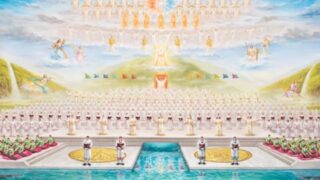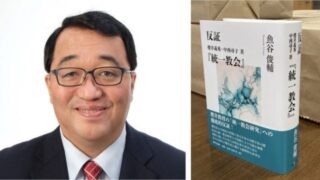A Japanese academic who is himself a former member of the Unification Church reviews UC member Shunsuke Uotani’s magnum opus criticizing Sakurai’s views.
by Masaki Nakamasa


In the study of new religions in Japan, there is a certain amount of accumulated research on Shinto-derivative NRMs such as Oomoto and Tenrikyo, which were suppressed and strictly controlled before the war, and Buddhist denominations (which are not related to any of the largest indigenous sects in Japan) such as Soka Gakkai, which is active in politics through the Komeito Party. Researchers seem to be trying to maintain a neutral attitude. However, the Unification Church (now Family Federation for World Peace and Unification), which has been in the news since the murder of former Prime Minister Abe, has been active in Japan for more than sixty years, yet most of the research has been conducted by activists involved in the opposition movement (i.e., “cult” experts). There has been little academically meaningful research on the organization.
The only serious study by scholars is “Unification Church” (2010) by Yoshihide Sakurai, a professor at Hokkaido University, and Hiroko Nakanishi, a researcher at Osaka Metropolitan University. However, Sakurai is himself involved in the anti-Unification Church awareness campaign, so his could not be called an academically reliable and neutral account. In his new book, “Unification Church” (2023), which Sakurai hastily authored on his own in response to the unrest surrounding the Unification Church after former Prime Minister Abe’s death, the contents of a blog by a former believer (who claimed to be a believer) were used as source material without indicating the source, and other sloppiness was also noticed.
Shunshuke Uotani’s monumental book, “Rebuttal to Yoshihide Sakurai and Hiroko Nakanishi’s book ‘The Unification Church’” is an attempt by a member of the Family Federation to correct the distortion of the image of the Unification Church prevalent in Japanese society. It provides a thorough response from the perspective of a believer who has studied theology to the previously published book, “Unification Church,” which led Sakurai to be considered as an authority on the Unification Church issue. Although it is not value-neutral since it is a rebuttal from the standpoint of a believer, it does provide important hints indicating in what sense Sakurai’s approach lacks academic objectivity. It also suggests what preparation and methods would be necessary to conduct a truly academically valuable study of this religious organization and, by extension, of any emerging religion in the midst of a conflict. In this regard, the book is a valuable contribution to the field of religious studies.
Uotani’s “Rebuttal” refutes Sakurai’s description of the Unification Church in considerable detail, including its doctrine, missionary strategy, process of joining the church, economic activities, and organizational overview, but the main emphasis is on the research methods of Sakurai, who is a sociologist of religion. Sakurai’s account is basically based on documents and testimonies from former believers who have left the organization. Among those who have left the church, there are those who have undergone exit counseling, those who, after leaving the church, are connected to anti-Unification Church groups and deprogrammers, and those who are most likely to have strong antipathy toward the church, i.e., those whom American sociologists such as Lewis A. Coser call “apostates.” Sakurai did not conduct interviews with active believers or participant observation in the rituals and life of the church.


Sakurai gives the reason for this decision: “The Unification Church is an extremely socially problematic organization, and as a researcher, I could not maintain an appropriate distance from the cult, and I expected the cult to exercise control over me as a researcher.” In response, Uotani cited overseas researchers such as Eileen Barker and George D. Chryssides in the U.K. and Massimo Introvigne in Italy, who have conducted participant observation while maintaining an appropriate distance from the church and have published research papers that have been highly praised by academic circles, and questioned Sakurai’s assumption. As for “control (pressure) on researchers,” he suggests that the fear of being pressured not to write about things that are unfavorable to the organization is an inherent part of any research into religious groups, and that it is not the proper attitude of a researcher to give up out of fear of pressure before having even tried.
What is interesting to me personally is how Sakurai, who based his research on the testimonies of “defector” ex-members, categorizes “defectors” and what type of approach he takes. I am a “defector” from the Unification Church myself—I was a member from April 1981 to October 1992. According to Sakurai’s classification, there are two main groups of “defectors”: (1) those who leave the church spontaneously and (2) those who leave by force. Each of these two is divided into two subgroups: (1)-i) spontaneous departures, and (1)-ii) departures with exit counseling (2)-i) those forced to quit by the cult (2)-ii) those forced to quit by acts of external intervention such as deprogramming.
According to this classification, I would presumably be in the category (1) – i) (spontaneous defector). According to Sakurai, the majority of people in this subcategory are those who quit at the stage of attending seminars, etc., and those who became formal church members and then could no longer keep up, but he says he does not know the exact numbers. As I said, I am in the latter subcategory. Sakurai clearly states that the main targets of his survey are (1) – ii) and that it is not easy to encounter (1) – i). The reason, he says, is that he cannot imagine anyone admitting to have been a member of the notorious Unification Church.
I would like to dispute the point “I can’t think of anyone who would admit to have been a member.” from my own perspective. Immediately after I became a university faculty member (January 1998), I publicly declared in various media that I was a former member of the Unification Church, and six months before the first edition of “Unification Church” was published, I published an autobiographical work titled “Portrait of N” (2009). If Sakurai has always been checking the websites and blogs that former believers established, there is no way he would not have known about me as an ex-believer. However, he has never contacted me to ask me to testify as a former believer. I think this is because I tried to report on the doctrines and practices as neutrally as possible within the scope of my knowledge, without emphasizing only the negative aspects of the Unification Church, and confessed my own problems. I suspect that he avoided to get in contact with me from the beginning because it would have been troublesome to hear from someone in the same position as himself as a university faculty member, and then ignore the person just because the testimony did not fit his own argument.


Let us return to Uotani’s “Rebuttal.” He, too, takes issue with the fact that Sakurai assumed from the beginning that no one would come forward and say they were former believers, and made no effort to find and meet with the “spontaneous” ex-members in the category (1)-i). In the context of his description of the subject of the survey, Sakurai even reveals his true feelings: “In the case of spontaneous defection, feelings toward the Unification Church are often ambivalent, and there are former believers who return to the Unification Church, so they do not match my interest, as I conduct a survey from a position that is critical of the Unification Church.” In other words, he is gathering only material that is convenient for the purpose of criticizing the Unification Church.
Sakurai does distinguish between (1)-ii and (2)-ii, but in both cases, the subjects are persons who quit under strong psychological pressure from others. As Uotani points out, it is known from comparative studies overseas that whether or not a person has received such “re-education” at the time of leaving the church makes a big difference in how he or she portrays his or her conversion experience. Drawing on empirical studies by Trudy Solomon, Stuart Wright, and others, Uotani points out that the percentage of people who testify that they have been “brainwashed” or “mind-controlled” is significantly higher among those who have undergone deprogramming than among those who have not.
Uotani further points out that the testimonies of defectors in the civil lawsuits against the Unification Church that Sakurai used show that in many cases they were deprogrammed and persuaded to,leave their religion in a state of “confinement.” They belong to the (1)-ⅱ category, who have no reasons to say something advantageous for the church. It is an abnormal state of affairs, but Sakurai does not seem to consider this point problematic.
Nakanishi’s part is mainly a survey on Japanese female believers who had married a Korean man and immigrated to Korea due to the international marriage blessing ceremony of the church. Since it is a research on active believers, it has some scholarly merit compared to Sakurai’s part. Uotani acknowledges this point. Even though the number of informants interviewed was relatively small (38), Uotani indicates that the author is hasty in drawing conclusions by forcing them into an “analytical” framework created by Sakurai and other anti-Unification Church activists. Although she discusses the differences between Japanese and Korean views of faith and marriage, she does not compare and contrast the two groups. Actually she did not conduct interviews with Japanese believers living in Japan.
I would like to see Unification Church research that is not bound by partisanship, conducted by Japanese religious scholars in response to this criticis by Uotani. In the current situation, many active believers and “spontaneous” ex-members would be happy to cooperate, I presume.









